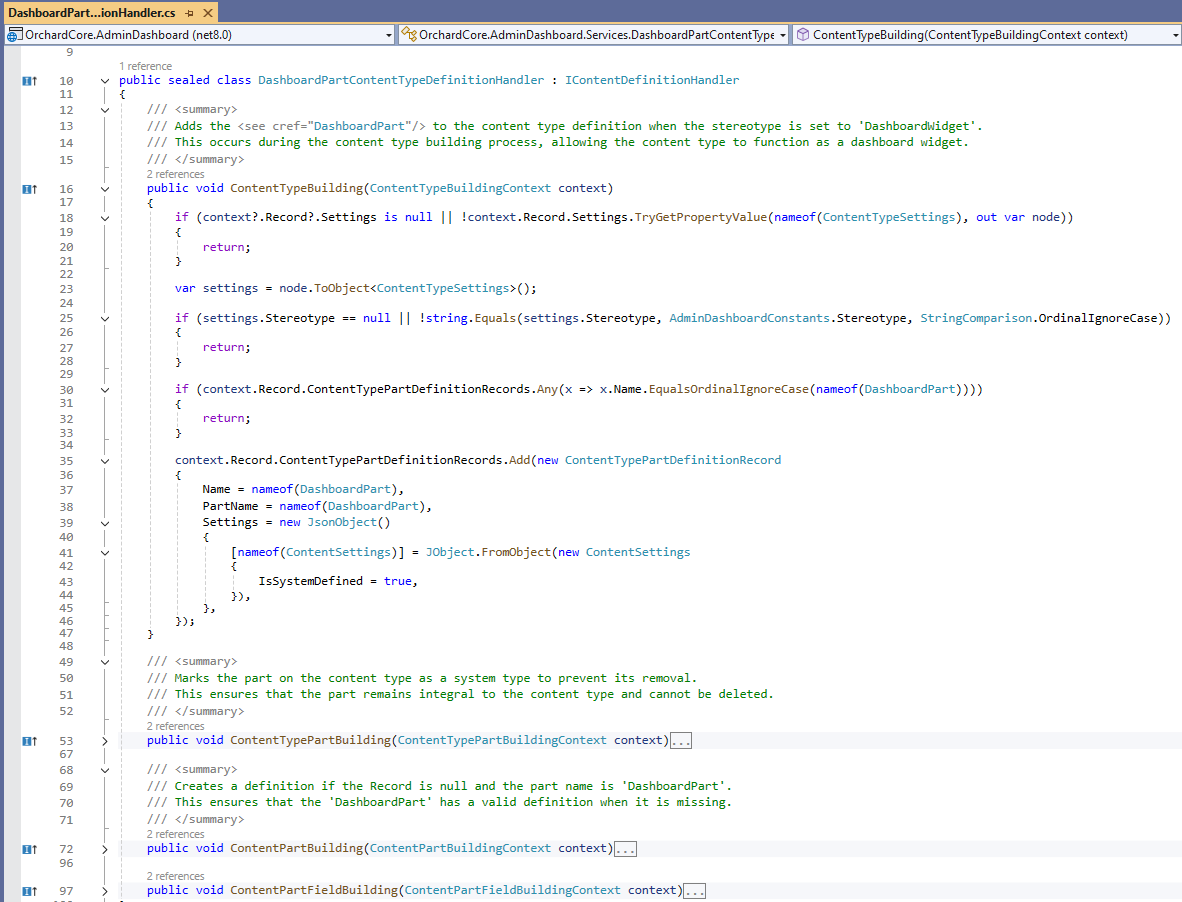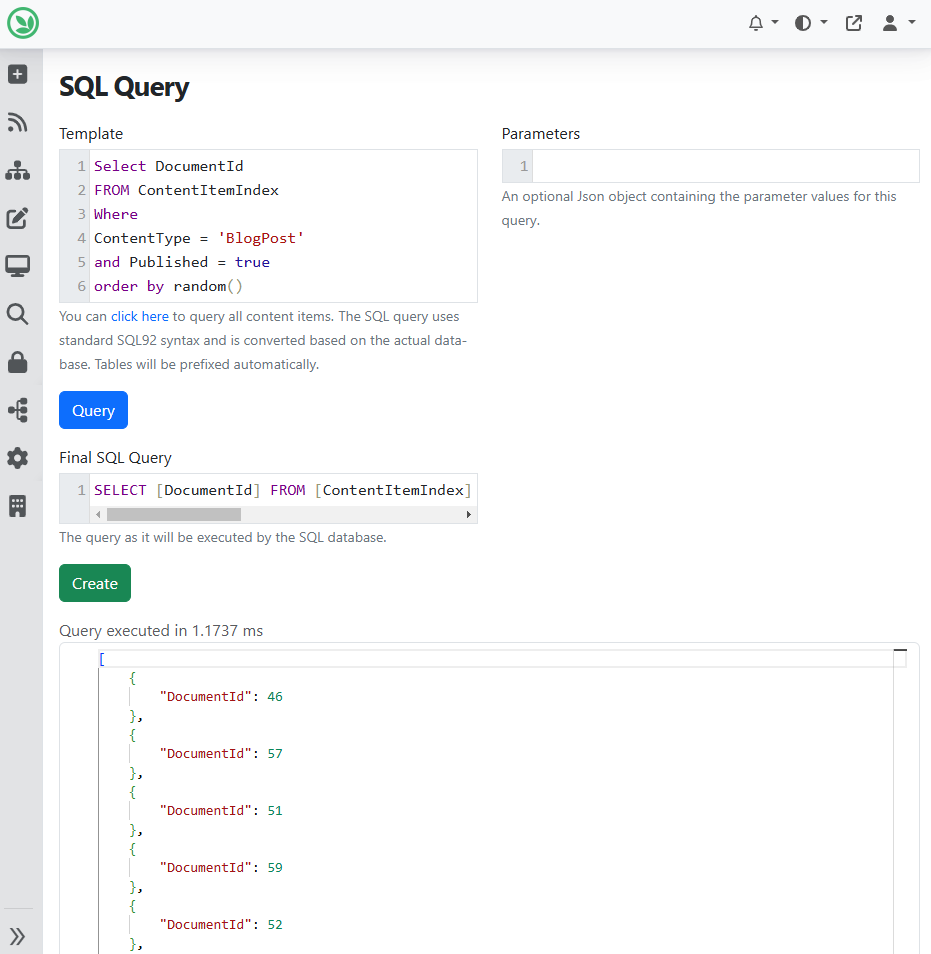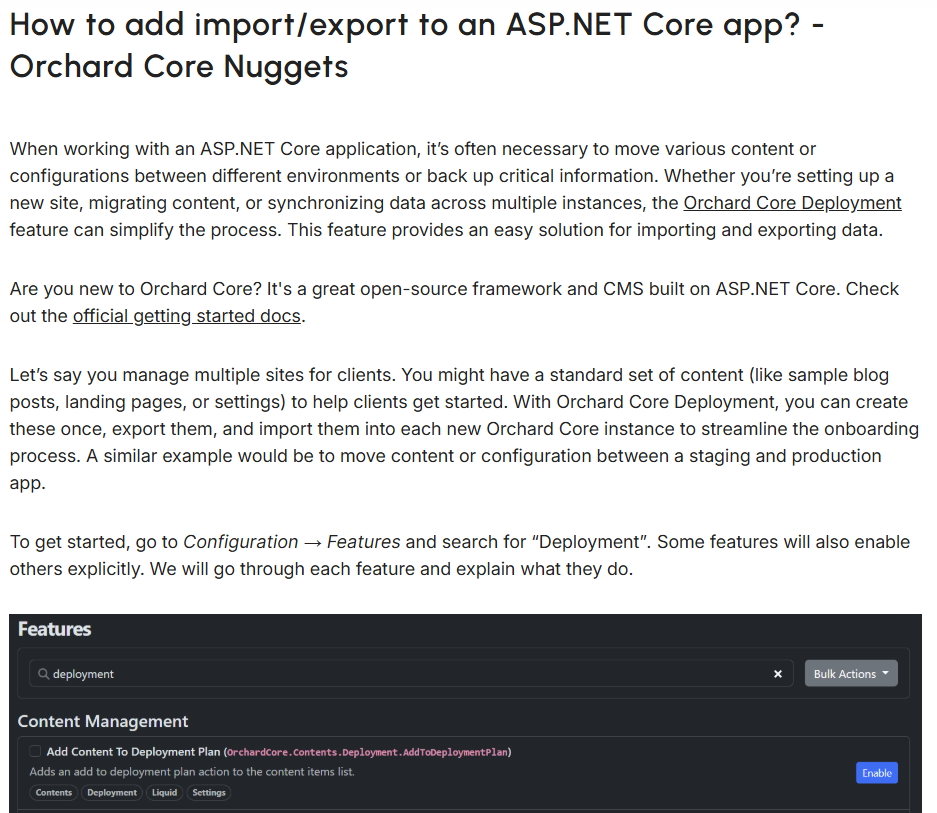Auto Attach the DashboardPart to content types with DashboardWidget stereotype, how to add import/export to an ASP.NET Core app - This week in Orchard (29/11/2024)
Orchard Core updates
Auto Attach the DashboardPart to content types with DashboardWidget stereotype
In Orchard Core 2.1, we've introduced the IContentDefinitionHandler interface, which allows you to intercept and modify content definitions as they are being built before being cached. This provides finer control over the creation of content types, enabling customization at various stages of the content definition process.
The following events are available for handling different aspects of content definition:
- ContentTypeBuilding(ContentTypeBuildingContext context): Triggered when creating a content type.
- ContentPartBuilding(ContentPartBuildingContext context): Triggered during the creation of content part definitions.
- ContentTypePartBuilding(ContentTypePartBuildingContext context): Triggered while constructing a content type part.
- ContentPartFieldBuilding(ContentPartFieldBuildingContext context): Triggered when building fields within a content part.
These event handlers allow you to adjust definitions at each step, providing excellent customization capabilities.
The new events mentioned above enable scenarios where you can inject content parts into content definitions programmatically. These parts are designated as System-Type, meaning users cannot remove or modify them through the UI or recipes. For an example of injecting a System-Type part into a content definition, refer to the DashboardPartContentTypeDefinitionHandler class. This ensures that specific content parts are always present in the content definition, maintaining a consistent structure across the application.
This also means that creating Admin Widgets no longer requires DashboardPart. Thanks to the newly introduced System-Type capability, attaching DashboardPart to an admin dashboard is no longer necessary. To create a new admin dashboard content type, assign the DashboardWidget stereotype to the content type. This streamlined process reduces complexity while ensuring that admin widgets are properly categorized without additional manual configuration. Don't forget that the DashboardPart will no longer be available as an attachable part by default.
Here, you can see the ContentTypeBuilding method of the DashboardPartContentTypeDefinitionHandler class. As you can read, it adds the DashboardPart to the content type definition when the stereotype is set to DashboardWidget.

Support ordering results in SQL queries randomly
Previously, SQL Query with random ordering fails with the following error message: Syntax error, expected: ASC, DESC, ., ,, ), LIMIT, OFFSET, UNION, ;, WITH, SELECT at line:5, col:15. Random( ) in SQL is generally used to return a random row from a table present in the database.
But from now on, the order by clauses can also use the random() function (case-insensitive) to order results randomly, e.g., SELECT * FROM ContentItemIndex ORDER BY random().
To check this out quickly, you must enable the SQL Queries feature under Configuration -> Features. Once enabled, you will see a Run SQL option under Search -> Queries. We set up our site using the Blog recipe, which means we have a BlogPost content type. We created some BlogPost content items to construct a query that returns the DocumentId from the ContentItemIndex table for every published blog post in random order. As shown on the screen below, the DocumentIds are displayed in random order.

News from the community
Orchard Nuggets: How to add import/export to an ASP.NET Core app
When working with an ASP.NET Core application, it’s often necessary to move various content or configurations between different environments or back up critical information. In our newest Orchard Nuggets post, we will show you how to use the Deployment feature of Orchard Core, which can simplify this process. By checking this post, you can read about the features related to deployment, like the Remote Deployment feature or the View or Download Content as JSON feature. You can read about deployment plans and how to use them or say which parts or contents of the site you want to export. And a lot more, of course!

Remember to check out the other posts for more bite-sized Orchard tips, and let us know if you have another question!
Orchard Dojo Newsletter
Lombiq's Orchard Dojo Newsletter has 466 subscribers! We started this newsletter to inform the community around Orchard of the latest news about the platform. By subscribing to this newsletter, you will receive an email whenever a new post is published in Orchard Dojo, including This week in Orchard.
Do you know other Orchard enthusiasts who want to read our weekly articles? Tell them to subscribe here!